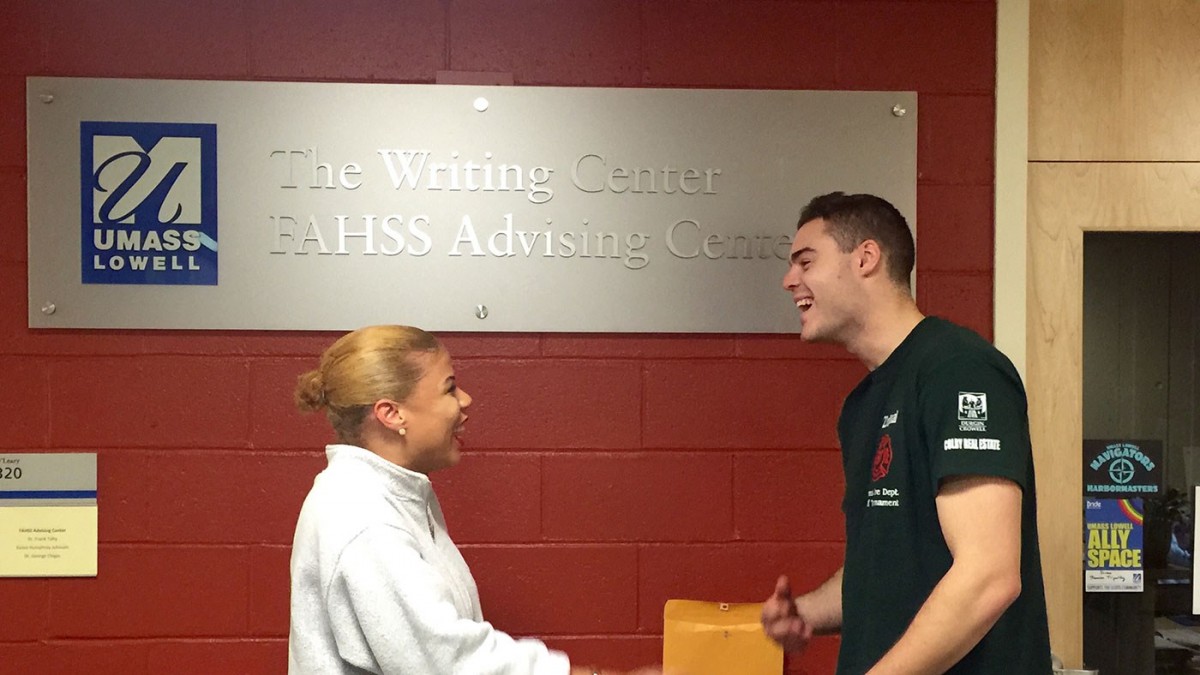Advisers help students create a path for success (Courtesy of UMass Lowell)
Brigid Archibald
Connector Contributor
During the 2015-2016 academic year, the Committee of Academic Affairs, led by Rob Callahan, put out surveys that found as the university had grown many first-year students, including transfer students, were confused by the current advising model. They found themselves in positions where they had changed majors, problems they didn’t know how to fix, or just simply did not know who their adviser was or how to get in contact with them.
This academic year, the Committee and the Office of Academic Administrators have worked together to try to find a solution to the problems in the advisory system.
This year’s incoming students will be the first to experience the solution: a new advising model called the Hybrid Model.
This is a model that has been successful in many universities, and the office has high hopes that it will help incoming students at UMass Lowell. This change will only affect first year students. The model is the first step of many to reform advising, and the office hopes that next year they will be able to expand the program to second year students. Under the Hybrid Model students will be given a professional adviser in addition to the preexisting faculty advisers.
Professional advisers are full time advisers who will act as a point of contact for incoming students. Freshmen will have a professional adviser within their college who will help with degree planning, mapping out schedules and defining goals.
Callahan, last year’s Academic Affairs Committee chair who worked on the reform said, “If we focus heavily on advising freshmen we get the roadmap set up for their entire stay here. The quicker that’s figured out the better.”
Transfer students’ professional advisers are through the university’s Centers for Learning. They will handle all the same work in addition to handling other challenges that are often presented to transfer students.
This program will stream line the freshmen year advising experience, ensuring that all freshmen are getting the same information. Dr. Julie Nash, vice provost for student success says, “One of the things it does is it allows consistency which is especially important for our new students, because their first experience on campus really sets the tone for how they are going to do. If we have good messaging and good outreach then we can hopefully catch students with a safety net before something bad happens.”
While the professional adviser takes care of the more clerical items, the faculty advisers provide students with discipline specifics.
Dr. Justin Gerstienfield, director of college based professional advising, a new position created just for this program, says, “They are going to tell students what it means to study a topic, how to become a content expert and show them all the ways they can use their degree in the real world.”
The goal is that as students move through school they will be better connected to their department and will develop a better understanding of the system. By the end of their second year, they will no longer need their professional adviser, and communicate mostly with their faculty adviser who will help determine which courses to take, help them find opportunities like co-op research or internships, and figure out the student’s trajectory for after graduation.
Kerry Donohoe, the dean of academic services, stressed that both advisers serve an important role by saying “It’s not either-or. Both are critical to the student’s success.”
Professional advisers are only the first part of a much broader advisory reform. The next big change is an advising page soon to go live on the university’s website. The page is a centrally coordinated space that will act as a one stop shop for all things advising, pulling together all the information that is already available for advising and adding more tools for both advisers and students. It will provide links to find students advisers, a step by step tutorial with links to explain how find an advisory report, a FAQ page, numerous how-to guides for things like course selection, and each college within the school will have its own page.
The site will also integrate the scheduling tool for advising that some colleges, like the Manning School of Business, are already using, and the school will be working on expanding the program to other colleges like the College of Fine Arts, Humanities and Social Sciences.
These changes are a result of the student’s involvement in the university’s programs. Vice President of Student Government Association Brian Madigan says, “The advising reform on campus has truly been a grassroot movement that has shown how the administration listens to the students.”
Donohoe encourages students to continue to be part of the discussion by providing feedback on the new advising system, and how they can continue to improve the new advising website.




